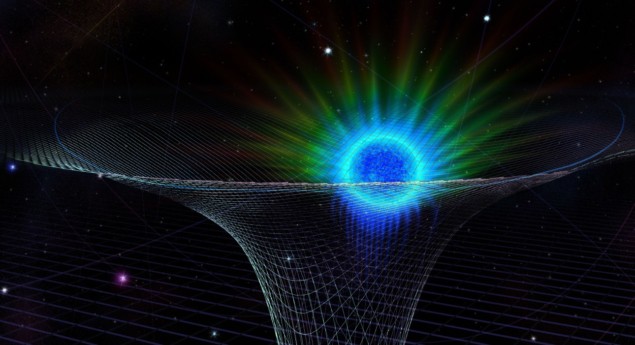
A key aspect of Einstein’s general theory of relativity has passed its most rigorous test so far. An international team led by Tuan Do and Andrea Ghez at the University of California, Los Angeles confirmed the Einstein equivalence principle (EEP) by analysing the redshift of light from the star S0-2 at its closest approach to Sagittarius A* – the supermassive black hole at the centre of the Milky Way. The study combined over 20 years of existing spectroscopic and astrometric measurements of S0-2 with the team’s own observations.
Since Einstein first proposed his general theory of relativity in 1915, the idea has stood up to intense experimental scrutiny by explaining the behaviours of gravitational fields in the solar system, the dynamics of binary pulsars, and gravitational waves emitted by mergers of black holes.
In 2018, the GRAVITY collaboration carried out a particularly rigorous test – observing S0-2 at its closest approach to Sagittarius A* in its 16-year orbit.
As expected, the GRAVITY astronomers observed a characteristic relativistic redshift in light from S0-2. This redshift is a lengthening of the wavelength of the light and arises from both the motion of the star (the Doppler effect) and the EEP. The latter is a consequence of general relativity and predicts a redshift in light from a source that is in a gravitational field such as that of a supermassive black hole.
Further measurements
Now in a completely independent study, Do and Ghez’s team tested the EEP using three further spectroscopic instruments. These collected an additional three months of redshift data at similar times to the GRAVITY study. Their observations included S0-2’s closest approach to Sagittarius A* in May 2018, its maximum line-of-sight velocity in March, and its minimum line-of-sight velocity in September; spanning a range of 6000 km/s in radial velocity.

Einstein’s general theory of relativity passes a supermassive test
The researchers then combined their observations with S0-2 redshift data collected by others in 1995-2017 – which includes observations made by eight other instruments. This allowed them to test for biases between instruments, and to perform additional analysis of the systematic errors made in previous studies. Overall, their data included 45 astrometric position measurements spanning 24 years. This allowed the team to map S0-2’s orbit, and 115 redshift measurements spanning 18 years – 11 of which were the team’s own new measurements.
Just like the GRAVITY experiment, the measurements gathered by Do, Ghez and colleagues were consistent with the EEP, with statistical analysis revealing that Einstein’s theories were 43,000 times more likely to explain their observed redshifts than the Newtonian model of gravity. Therefore, while EEP violations are predicted by theories incorporating effects including quantum gravity and dark energy, general relativity still holds up for the time being. However, the researchers remain hopeful that with yet more rigorous analysis, Einstein’s theories may soon begin to break to provide a glimpse of new physics.
The research is described in Science.



